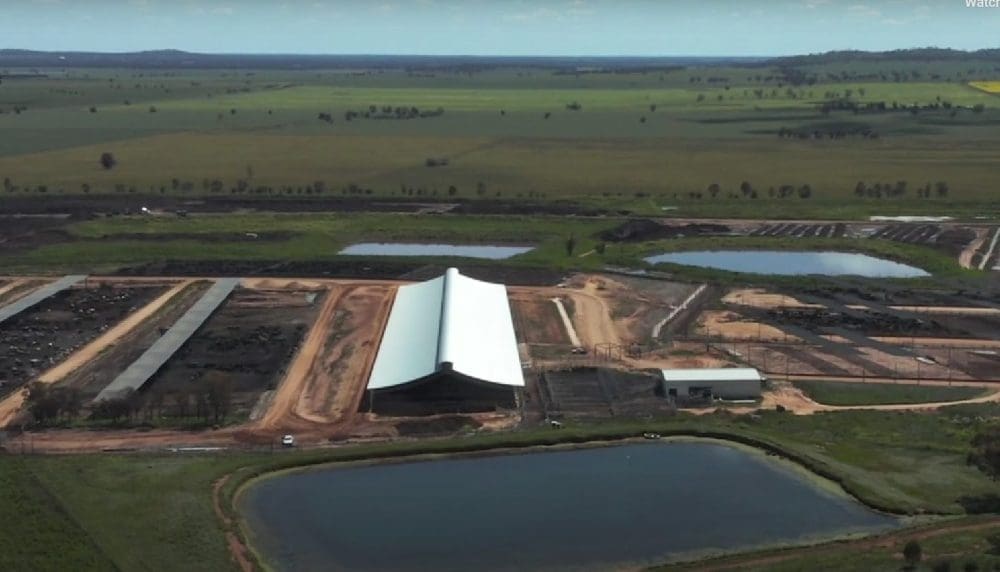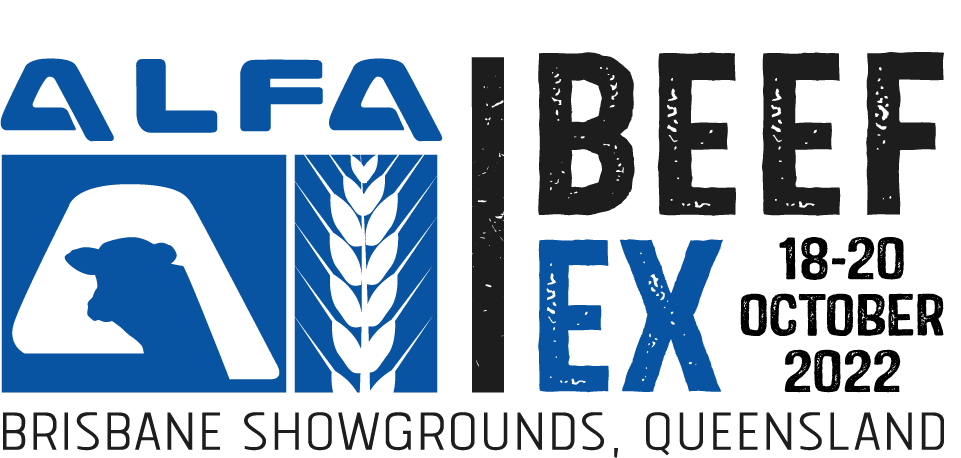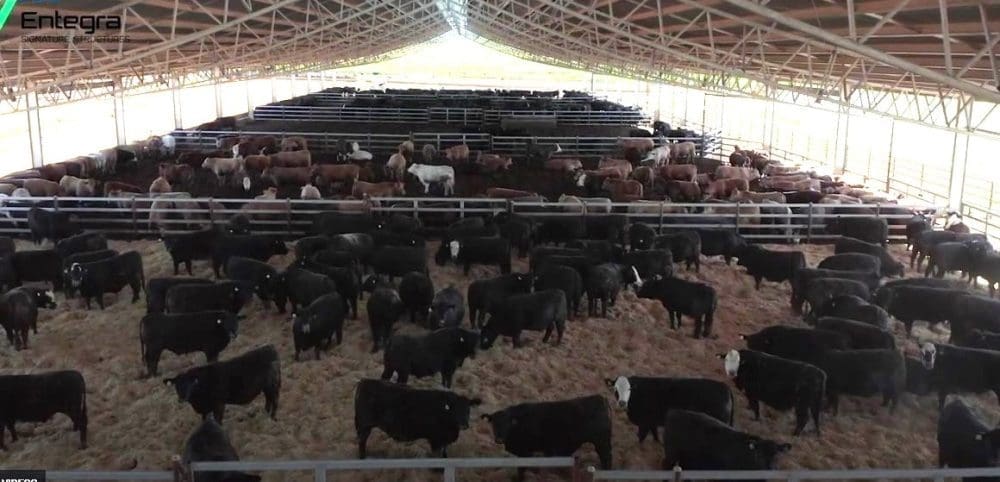
Shed structure in place beside existing feedlot pens at Teys Charlton
When cattle arrive at the Teys Australia Charlton feedlot in Victoria, they are now divided for scientific purposes.
There’s nothing new about sorting arrivals at a feedlot, but this specific drafting is set to provide data to answer a vital industry question: To shed or not to shed.
Or more specifically, are there benefits in shedding in terms of animal health performance, productivity and profit?
This first in-house trial at the Charlton feedlot, in the state’s North Central region, has been running for 90 days and will finish when the cattle are processed after 120 days.
Charlton feedlot general manager Ash Sheahan said on arrival animals were sent to either a traditional feedlot pen covered partially with shade cloth, or to new shed-covered pens.
“One cohort is under the shed and the other outside, so conditions can be compared directly,” he said.
“We will look at feeding efficiency, carcase weight and animal health.”
 It’s only early days but Mr Sheahan said there was anecdotal evidence that the animals under the shed had a higher feed intake than their outside equivalents.
It’s only early days but Mr Sheahan said there was anecdotal evidence that the animals under the shed had a higher feed intake than their outside equivalents.
There were also other benefits, especially considering this recent wet winter.
“With bedding in the shed, there’s less mud on the cattle,” he said.
“It’s a comfort thing and also for the (processing) plant, they won’t have to spend as much time removing dags and mud prior to slaughter.”
Shed manufacturer Entegra’s Ridgeback shed system is being used for the trial.
Ridgeback is being used widely through the Australian beef, dairy and live export industries to provide shade, shelter and maximise air circulation.
The Teys trial will run for two years, including various groups of animals, to encapsulate all seasons and weather conditions.
Other parameters tested as part of the trial include comparing the individual animal average daily weightgain between the groups, weather conditions and odour.
Separately, Teys will also trial various bedding beneath the shed structures to determine what suits the facility and what “holds-up” the best.
Straw was used for the initial bedding as it was the most cost effective at the time, according to Mr Sheahan said.
He believed the bedding used will play a big part in determining the odour omitted from the facility.
Although it’s only early days, he said the straw bedding meant there was a “different” smell under the shed compared with the traditional shade cloth style pens, and thought this would change as more bedding was added.
Weather data will be collected and compared with the outside pens.
“We are going to have other sensors in the shed so we can tell the actual difference in temperature, wind speed and humidity,” Mr Sheahan said.
Panting scores will be compared but only when trigger-points are reached for heat load.
The Charlton feedlot is a joint venture between the family-owned Teys company and global agricultural, financial and industry products and services business Cargill. It was purchased in 2014.
About 60,000 British bred steers a year leave the North Central Victorian feedlot for processing at Teys abattoirs at Naracoorte or Wagga.

Improvement focus drives innovation
The introduction of permanent covered housing at Charlton was initially prompted by the rebuilding of the feedlot’s hospital pens.
Mr Sheahan said housing sick or injured cattle under a permanent structure provided by far the best outcome for these animals.
But once the Ridgeback shed started taking shape, he said they realised it could be more than just a place for animals to recover.
“With our environment here, in southern Victoria, we have wet winters and we are always looking for other ways to improve our facilities for the winter months,” he said.
“We’ve done a lot to improve the pen surfaces over the years, which has reduced the mud levels in winter months, and also resurfacing floors and pens when it does dry out in spring and summer. But we are always looking for new ways to improve.”
With this in mind it was decided to use half the 200 metre long Ridgeback shed area as a trial to generate data on the value of feeding cattle under a roof, with the other half as hospital pens.
The hospital side of the shed measures 100m x 36m and is split into smaller pens.
The feeding part of the shed is the same size and has four pens and a feed bunker down one side of the shed.
Weather challenges
It was a wet start to spring in Victoria this year which meant cattle in the Charlton feedlot’s traditional outside yards were spread out.
Reducing stocking density is a management strategy used to reduce mud in winter.
Similarly, in summer, cattle are “tightened-up” in the yards to limit dust.
But given the reduced stocking rate on the feedlot this winter, it meant the cattle housed under the shed structure were stocked at “almost double” their outside equivalent.
At 6 square metres a head under the Ridgeback, the cattle stocking density was within national guidelines and, most importantly, Mr Sheahan said they looked “very, very happy” to be out of the rain.
Weather aside, he said housing cattle under a roof could be an option to feed more cattle without having to expand the feedlot. This could be good news for the grainfed industry as there are strict regulations for the development of feedlots.
“It could be a way of expanding numbers on feed without growing the footprint of your feedlot,” he said.
“Having more cattle on the same area, within the same boundary, without physically spreading. There’s potentially more efficiencies too.”
Selecting a design
Attracted by the ventilation attributes of the Entegra Ridgeback design, Mr Sheahan said the decision by Teys to purchase a shed structure was confirmed after he visited the Northern Territory Livestock Exporters Association Ridgeback shed at its Berrimah Export Yards near Darwin.
“A mate of mine runs a place in the Territory and they export cattle that have spent time in both (types) of yards – outdoor and the covered Berrimah yards,” he said.
“It was a bit of a rough trial but he found improved gains at the covered yard before the cattle went on the boat.”
Entegra previously constructed hay sheds for the Charlton feedlot.
Source: Entegra
